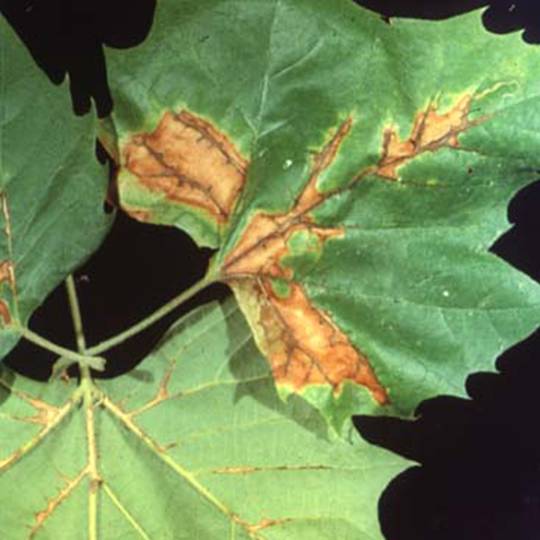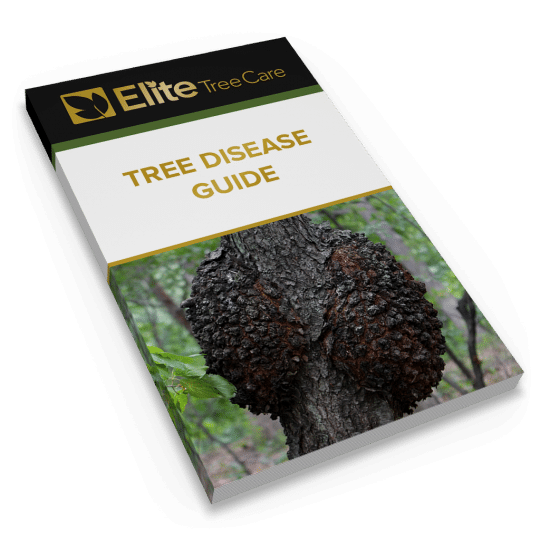Tree Disease Spotlight: Sycamore Anthracnose
Posted
October 27, 2016

Enemy number one for sycamore trees in our country is sycamore anthracnose. Anthracnose is a disease caused by a fungus that causes dark, sunken lesions on the newest leaves and twigs of a tree. Thus, it may be no surprise that the word anthracnose comes from the Greek term for charcoal or coal
Signs of Sycamore Anthracnose
Sycamore anthracnose attacks sycamores in early spring, when the weather is cool and wet. The fungus overwinters on the tree and relies on average daily temperatures of 50 to 55 degrees F. for its spores to germinate. The longer that temperatures stay within this range, the more vigorously the fungus will spread. The first place of attack is on new buds and leaves. The fungus causes newly formed leaves to crinkle, turn tan or brown, wilt, and fall. Then, older leaves develop dark and sunken dead areas along their veins. These symptoms are often mistaken for frost damage.
A diseased tree may also develop cankers on its twigs and mature branches, resulting in twig dieback and girdling and death of bigger branches. You might see small black fruiting bodies of the fungus to blame on the tree’s dead twigs and branches. As twigs break and fall off, the tree will develop a ragged appearance. The clusters of dead twigs will result in abnormal branching such as witches’ brooms or as the twigs die, break and fall, the tree will appear ragged.
Fortunately, the disease rarely kills the sycamore. Still, repeat infections can cause abnormal branching and leave a tree vulnerable to other diseases and pests.
3 Tips to Prevent and Control Sycamore Anthracnose
1. Practice smart sanitation and cultural techniques.
Rake up and destroy all fallen leaves and twigs. Prune the tree, cutting out cankers and unhealthy tissue from infected branches. Otherwise, any spores on these diseased pieces will germinate the following spring. Between every pruning cut, dip your pruning shears in a 10% bleach solution to contain the disease. Also, during a dry, snowless winter, water your trees once or twice a month. Fungal infections spread more rapidly in a drought-stricken tree.
2. Fertilize regularly.
Maintain healthy soil to protect your tree. In the spring after the first appearance of the disease, have a tree care professional conduct a soil test, or obtain a free one from your county extension office. If your soil needs it, apply a nitrogen-rich dry or granular fertilizer to the surface of the soil over the area where the tree’s roots lie. Fertilize to a radius of about 12 feet from the center of the tree. A yearly application of nitrogen will stimulate growth and help anthracnose-infected trees recover.
3. Treat sycamore anthracnose with fungicide.
Apply a topical fungicide spray that contains lime-sulfur (Bordeaux mixture) or chlorothalonil (daconil) in the spring, when buds begin to open into leaves. During rainy springs, apply more often, at weekly or biweekly intervals until the weather is 60 degrees F. or above. Also, if you have a colder-than-usual, wet summer, protect any additional crops of leaves that the tree produces with another application of fungicide spray.
If you’ve got a large sycamore tree, or one with a history of anthracnose, call on the experts at Elite Tree Care to treat the tree with a systemic fungicide. The systemic method is highly effective but involves drilling a hole into the tree, so it must be done by an experienced and trained tree specialist. A systemic fungicide treatment is best given in the fall. This way, the active chemical can travel throughout the vascular system of the tree and protect it from an infection come early spring.
Contact the Elite Tree Care team at 610-935-2279 to help diagnose or treat sycamore anthracnose and keep your trees healthy.

Download Your FREE Tree Disease Guide
Get a grip on what’s plaguing your tree with our visual overview of common tree diseases. (Most likely, it’s a fungus.)